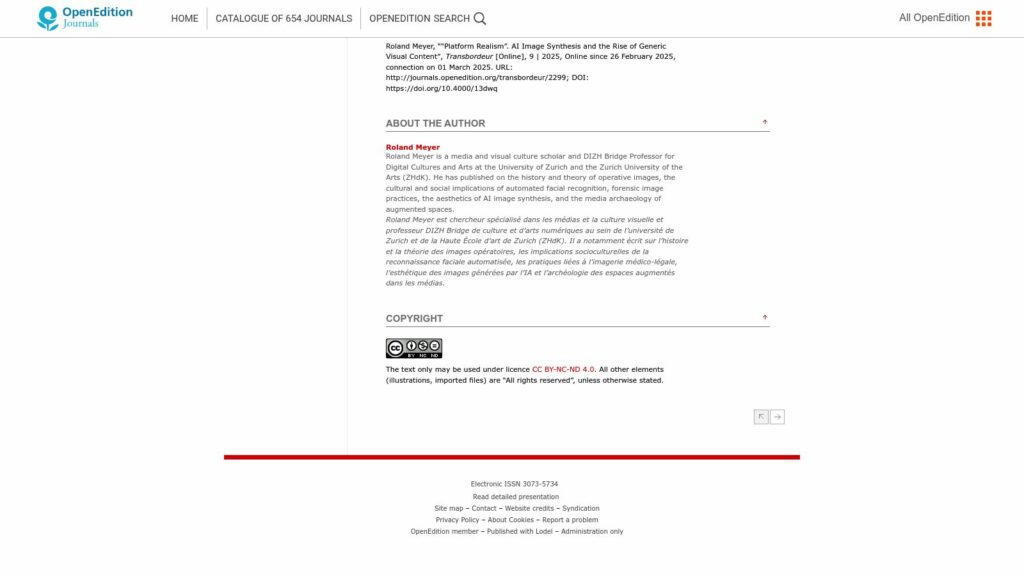AI image synthesis, exemplified by models like DALL-E and Midjourney, aims for “realistic” representations that are often generic and biased toward white, Western cultural aesthetics. This phenomenon, termed “platform realism,” arises from billions of past images and is tailored to corporate norms and consumer preferences. The essay critiques this model, highlighting its implications for digital visual culture and arguing that AI-generated images reflect a commodified visual landscape rather than authentic representations of reality. The aesthetic is shaped by user expectations, historical context, and algorithmic outputs, resulting in a cycle of generative imagery that prioritizes familiarity over originality.
“Platform Realism”. AI Image Synthesis and the Rise of Generic Visual Content
